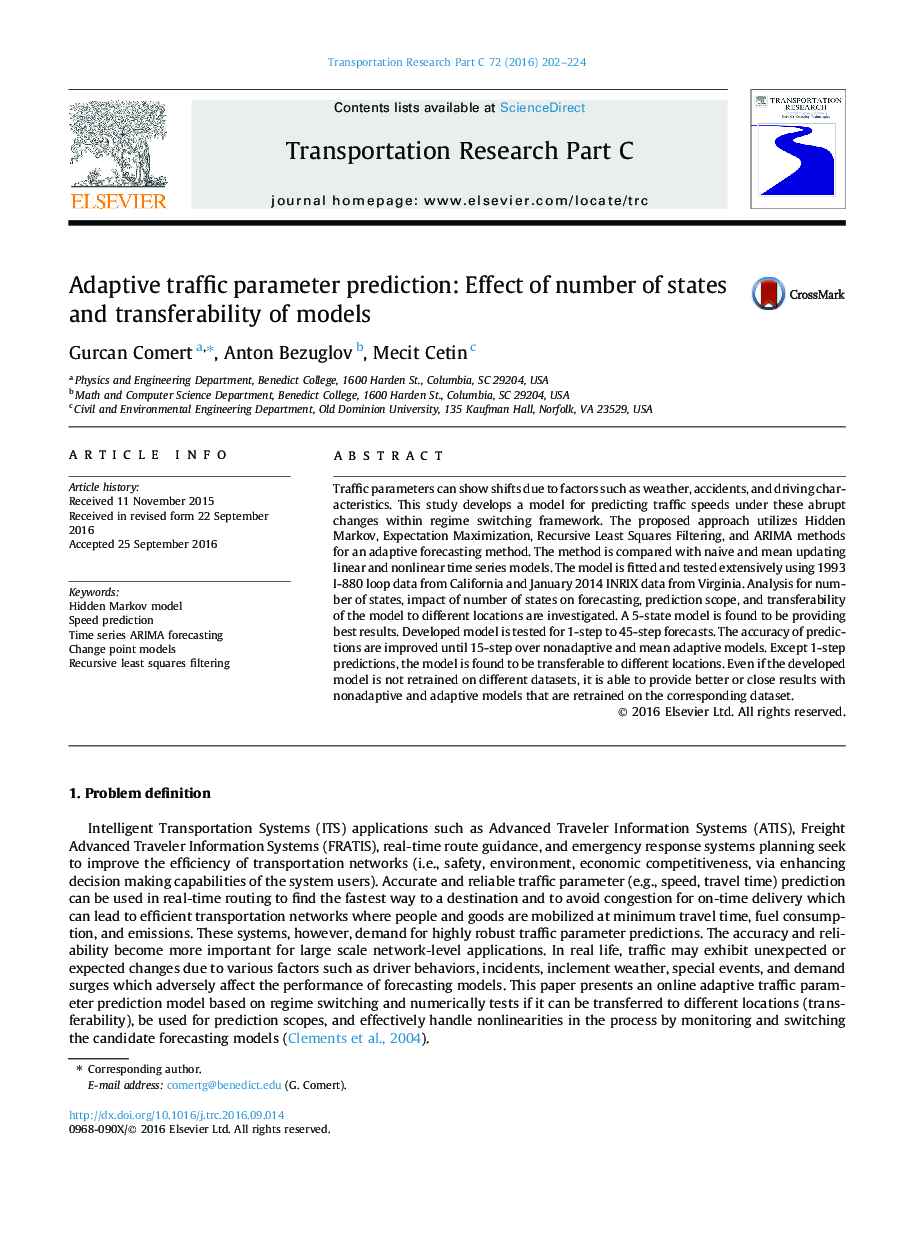| Article ID | Journal | Published Year | Pages | File Type |
|---|---|---|---|---|
| 4968680 | Transportation Research Part C: Emerging Technologies | 2016 | 23 Pages |
Abstract
Traffic parameters can show shifts due to factors such as weather, accidents, and driving characteristics. This study develops a model for predicting traffic speeds under these abrupt changes within regime switching framework. The proposed approach utilizes Hidden Markov, Expectation Maximization, Recursive Least Squares Filtering, and ARIMA methods for an adaptive forecasting method. The method is compared with naive and mean updating linear and nonlinear time series models. The model is fitted and tested extensively using 1993 I-880 loop data from California and January 2014 INRIX data from Virginia. Analysis for number of states, impact of number of states on forecasting, prediction scope, and transferability of the model to different locations are investigated. A 5-state model is found to be providing best results. Developed model is tested for 1-step to 45-step forecasts. The accuracy of predictions are improved until 15-step over nonadaptive and mean adaptive models. Except 1-step predictions, the model is found to be transferable to different locations. Even if the developed model is not retrained on different datasets, it is able to provide better or close results with nonadaptive and adaptive models that are retrained on the corresponding dataset.
Keywords
Related Topics
Physical Sciences and Engineering
Computer Science
Computer Science Applications
Authors
Gurcan Comert, Anton Bezuglov, Mecit Cetin,
